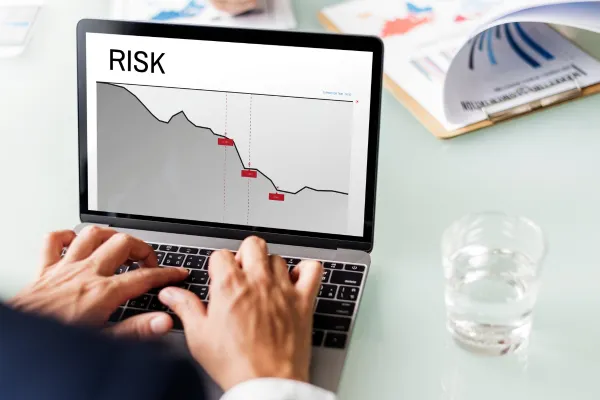The First Step Is The One You Believe In, But The Second One Might Be Profound!
WHAT WE DO
BLUE PHOENIX COACHING & BLUE PHOENIX ACADEMY
Our Services - Blue Phoenix Coaching
STILL NOT SURE?
Frequently Asked Questions
We understand that you may have questions. Well, we have answers.
Check out our FAQ's and if you still have questions, please don't hesitate to contact us.
Question 1: How do you lorem ipsum?
Lorem ipsum dolor sit amet, consectetur adipisicing elit. Autem dolore, alias, numquam enim ab voluptate id quam harum ducimus cupiditate similique quisquam et deserunt, recusandae.
Question 2: What do you lorem ipsum?
Lorem ipsum dolor sit amet, consectetur adipisicing elit. Autem dolore, alias, numquam enim ab voluptate id quam harum ducimus cupiditate similique quisquam et deserunt, recusandae.
Question 3: When can I lorem ipsum when I buy?
Lorem ipsum dolor sit amet, consectetur adipisicing elit. Autem dolore, alias, numquam enim ab voluptate id quam harum ducimus cupiditate similique quisquam et deserunt, recusandae.
Question 4: What if I feel stuck with lorem ipsum?
Lorem ipsum dolor sit amet, consectetur adipisicing elit. Autem dolore, alias, numquam enim ab voluptate id quam harum ducimus cupiditate similique quisquam et deserunt, recusandae.

Service 1
Lorem ipsum dolor sit amet

Service 2
Lorem ipsum dolor sit amet

Service 3
Lorem ipsum dolor sit amet

Service 4
Lorem ipsum dolor sit amet

Service 5
Lorem ipsum dolor sit amet

Service 6
Lorem ipsum dolor sit amet

Service 7
Lorem ipsum dolor sit amet

Service 8
Lorem ipsum dolor sit amet

Embracing Risk-Taking and Decision-Making
In the journey of life, every decision we make involves an element of risk. From choosing a career path to investing in a business venture, our lives are shaped by the risks we take and the decisions we make. While some may shy away from risk, fearing failure or uncertainty, others embrace it as an opportunity for growth and success.
In this blog, we'll discuss the intertwining importance of embracing risk-taking and decision-making for personal and professional growth.
The Nature of Risk-Taking
Risk-taking is inherently tied to the concept of uncertainty. It involves stepping out of one's comfort zone and venturing into the unknown, with the possibility of either success or failure. While the word "risk" often carries negative connotations, it's essential to recognize that calculated risks can lead to innovation, progress, and personal development.
Embracing risk-taking requires a shift in mindset. Instead of fearing failure, people who are adept at taking risks see each challenge as an opportunity for growth. They understand that failure is not a setback but rather a steppingstone towards success. Embracing risk-taking enables us to open ourselves up to new experiences, learning opportunities, and the chance to reach our full potential.
The Role of Decision-Making
Central to the process of risk-taking is decision-making. Every risk we take is preceded by a decision – a choice to pursue a particular course of action despite the uncertainties involved. Effective decision-making involves weighing the potential outcomes, considering available information, and trusting one's instincts.
However, decision-making is not always straightforward. We often face dilemmas where the best course of action is unclear, and the consequences of our choices are uncertain. In such situations, embracing risk-taking becomes essential. Rather than succumbing to indecision, we must be willing to take calculated risks and make informed choices, even in the face of ambiguity.
The Intersection of Risk-Taking and Decision-Making
The synergy between risk-taking and decision-making is undeniable. Each decision we make involves an element of risk, and our willingness to take risks influences the quality of our decisions. Embracing risk-taking helps us to become more adept at making informed choices, even in high-stakes situations.
Moreover, the ability to take risks and make decisions is a hallmark of effective leadership. Leaders who are unafraid to venture into the unknown inspire confidence and foster innovation within their teams. They understand that progress often requires stepping outside of the status quo and challenging conventional wisdom.
Embracing Risk-Taking and Decision-Making in Practice
So, how can we cultivate a mindset of embracing risk-taking and decision-making in our lives? Here are a few practical strategies:
1. Define Your Objective:
Before diving into any decision-making process, it's crucial to have a clear understanding of your objective. Define what you aim to achieve, whether it's launching a new product, expanding your business into new markets, or making a career transition.
Clearly outlining your goals helps you provide yourself with a roadmap that guides your decision-making process. This clarity helps you stay focused amidst uncertainties and ensures that the decisions you make align with your overarching objectives.
2. Gather Information:
Informed decision-making relies on a thorough understanding of the situation at hand. Gather as much relevant information as possible before making a decision. This may involve conducting market research, analyzing industry trends, seeking advice from experts, or consulting with stakeholders.
Collecting diverse perspectives and insights helps you gain a comprehensive view of the landscape, enabling you to make more informed choices. Remember, knowledge is power, and the more information you have, the better equipped you'll be to assess risks and opportunities.
3. Assess Risks and Benefits:
Every decision comes with its own set of risks and benefits. Once you've gathered the necessary information, take the time to carefully evaluate the potential risks and rewards associated with each decision option. Consider factors such as financial implications, market dynamics, competitive pressures, and potential obstacles. Assess the likelihood of success as well as the potential consequences of failure.
4. Trust Your Intuition:
While data and analysis are valuable tools in the decision-making process, don't discount the power of intuition. Sometimes, your gut instinct can provide valuable insights that data alone cannot capture. Trust yourself and your instincts, especially when faced with uncertainty or conflicting information.
Your intuition is informed by your past experiences, knowledge, and subconscious processing, making it a valuable resource in decision-making. While it's essential to be analytical and logical, don't hesitate to listen to your inner voice and trust the instincts that have guided you thus far.
5. Consider Alternatives:
In any decision-making process, it's essential to determine multiple options before committing to a course of action. Take the time to brainstorm and consider alternative approaches or solutions to your objective. This creative examination can uncover new opportunities and perspectives that may not have been initially apparent. Considering a range of alternatives helps you increase the likelihood of finding the optimal solution and mitigate the risk of overlooking better options.
6. Evaluate Long-Term Implications:
When making decisions, it's crucial to look beyond immediate outcomes and consider the long-term implications of your choices. Assess how each option aligns with your overarching goals and values and evaluate its potential impact on future opportunities and challenges.
Taking a holistic view of the situation you can make decisions that not only address immediate needs but also set you up for sustainable success in the long run.
7. Seek Input and Feedback:
Decision-making doesn't have to be a solitary endeavor. Involve relevant stakeholders, colleagues, or mentors in the process by seeking their input and feedback. Collaborative decision-making not only brings diverse perspectives to the table but also fosters buy-in and commitment from those involved.
Additionally, soliciting feedback from others can help identify blind spots, challenge assumptions, and uncover valuable insights that may have been overlooked.
8. Embrace Iteration and Adaptation:
Rarely are decisions set in stone. Embrace a mindset of iteration and adaptation, recognizing that circumstances may change, and new information may emerge over time. Be flexible and open to adjusting your course of action as needed based on feedback, market dynamics, or evolving priorities.
Viewing decision-making as a dynamic and iterative process, rather than a one-time event you empower yourself to navigate uncertainties and capitalize on emerging opportunities effectively.
Conclusion
In conclusion, embracing risk-taking and decision-making is essential for personal and professional growth, unlocking opportunities, overcoming challenges, and ultimately achieving success. So, dare to take risks, trust your instincts, and embrace the journey of decision-making—for therein lies the path to growth and fulfillment.
FAQs
1. How can I differentiate between a calculated risk and a reckless one?
Calculated risks involve assessing potential outcomes, weighing probabilities, and making informed decisions based on available information, while reckless risks are taken without proper consideration of consequences or adequate preparation.
2. How do I overcome the fear of failure when taking risks?
Overcoming the fear of failure entails reframing your mindset to embrace it as a natural part of learning. Rather than a setback, see it as an opportunity for growth. Focus on lessons learned and use them to inform future decisions and actions.
3. What strategies can I use to enhance my decision-making skills?
Enhancing decision-making skills involves honing cognitive and emotional abilities. Strategies include gathering relevant information, considering multiple perspectives, setting clear evaluation criteria, seeking feedback, and learning from past experiences.
CONTACT US
Blue Phoenix Coaching
Main: 321-999-8787
Fax: 800-991-2996
Email: [email protected]
Support Email: [email protected]
© 2025 Blue Phoenix Coaching LLC - All Rights Reserved

